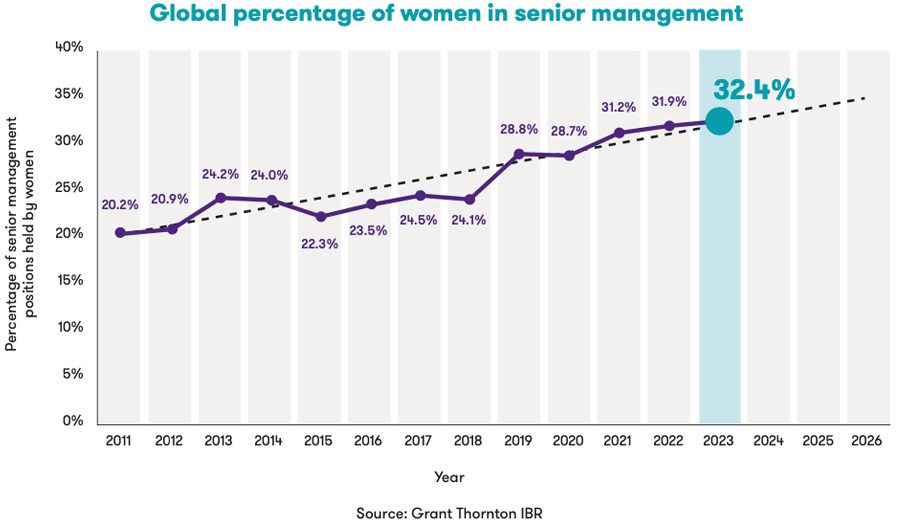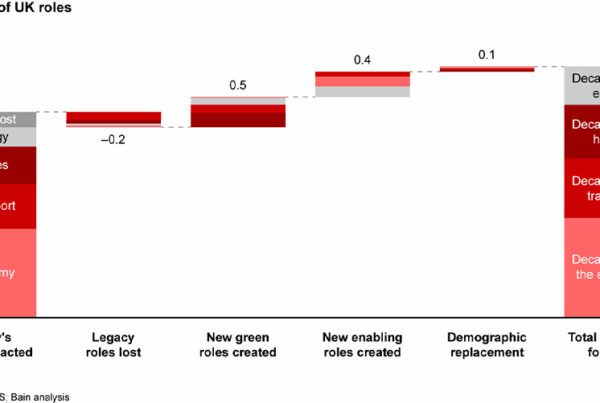Businesses around the world are struggling to live up to their commitments when it comes to offering equal opportunities to men and women in their workforce. A new study suggests that growth in the number of women with senior management roles is moving at a crawl, while just under one-in-ten mid-market firms still have no women in senior leadership roles.
The International Women’s Day celebrations of modern life are somewhat removed from their origins. Initially growing from the international socialist movement of the early 20th century, the day is now more commonly commemorated by the annual release of a slew of reports, defining progress on women’s rights according to how many women hold senior business roles.
Each year, the reports also tend to note a similar outcome. Businesses are making ‘slow progress’ when it comes to gender parity in the workplace. 2023 seems to broadly be in keeping with that long-standing trend, with a global study of mid-market firms from Grant Thornton finding that the global portion of women in senior management roles now stands at just over 32%.

That marks a 0.5% rise on the number of women in mid-market leadership roles in 2022. It also would represent growth of less than 10% over the last 10 years – with a little over 24% of senior management roles having been held by women in 2013. At that rate, Grant Thornton predicts that the percentage will only hit 34% by 2025.
The report also noted that 9% of mid-market businesses around the world still have no women in senior leadership. According to Grant Thornton’s experts, this suggests that the long-standing idea that one-third of senior roles being held by women would act as a catalyst for change underestimated the situation.
Grant Thornton’s Global Leader for Network Capability and Culture, Karitha Ericson, admitted, “The 30% target was held as a ‘tipping point’ which would trigger an acceleration toward more gender balanced workplaces. Given the incremental change since mid-market businesses in our research reached 30%, it is clear we now need to inject greater determination to fully reap the benefits of greater diversity.”

For some time, initiatives such as Club 30% have aimed for board representation in the UK, and the US to consist of at least 30% women. Even as economies across Europe and North America have reached that threshold, however, progress relating to women taking senior business roles seems to have stalled – and even regressed.
Grant Thornton’s research suggests that both regions are moving backwards when it comes to promoting women to senior roles. The portion of women in senior management declined steeply across ASEAN, Latin America and Europe during the pandemic – but while the former two have recovered, and risen closer to 40%, Europe has stagnated around 33%. Meanwhile, North America has seen a notable drop-off in the last year, sinking to 31%. This suggests that while companies in both regions are verbally committed to gender equality, most need to re-evaluate how they put their intentions into practice, if they are to avoid being accused of making empty promises.
Katie MacQuivey, a Managing Director for Grant Thornton in the US, warned, “Companies are committed to gender diversity more now than ever given the research that diverse leadership teams benefit their brand and their financial success… [but] it’s concerning that progress has plateaued and gone backwards [in some economies]. Given the complexity of factors that simultaneously accelerate and detract from parity, it’s crucial that companies build a pipeline of diverse leadership across all levels and invest in long term programs to ensure success isn’t only focused on a point in time.”




